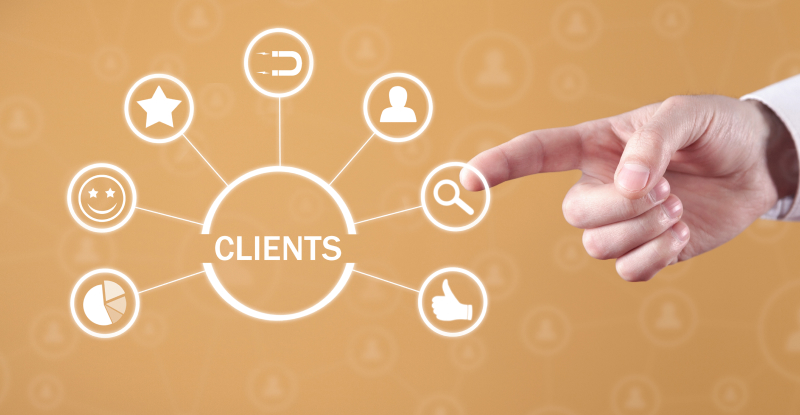
This article is the first in a quarterly series that will examine updates and trends in future commerce.
Commerce is no stranger to the disruptive power of technology. A generation ago, we thought ATMs were the ultimate convenience compared to waiting in line for a bank teller. In the next evolution, online banking and e-transfers allowed us to conduct most of our financial transactions without even having to go to the bank. Now, Bitcoin, the world’s first digital currency, not only exists but also circulates with a total worth of close to US$9 billion, and blockchain, the decentralized ledger technology behind it, is on the verge of revolutionizing financial technology (fintech).
Toronto’s Bay Street, New York’s Wall Street, and London’s Square Mile have become increasingly aware of the opportunity, and threat, presented by fintech innovators. KPMG reports that global investment in fintech in 2015 was US$46.7 billion and $24.7 billion in 2016. Though investment has declined, dollars contributed in 2016 are still staggering and investment is expected to grow. The next wave of technology has proven to be a powerful lure. It is clear to those invested and involved that we are at the start of the next major technology revolution.
What is Blockchain Technology?
This infographic by IBM defines blockchain as “a shared ledger for recording the history of transactions – that cannot be altered.” Rather than a record existing in one single location, it is shared amongst computers all around the world.
What makes blockchain stand out from current technology is that it is decentralized, so it allows for assets to be transferred wirelessly without using an intermediary. Rather than having a centralized place where the blockchain ledger is housed (such as a bank), it exists on a peer-to-peer network of multiple computers (nodes) simultaneously. Each node has its own independent copy of the ledger. Each time a new piece of information is entered into the ledger, it is distributed to every node in the network to verify the transaction. When information is requested from the network, all nodes are queried and show the requestor the “consensus” answer.
Since information on blockchains is controlled by and distributed to all nodes on the network, rather than a select group of users, it is much less susceptible to fraud and systematic corruption than centralized systems. Also, blockchain users do not require external mediation (such as lawyers holding funds in trust) or a conventional trust-based relationship to execute a transaction because users can rely on the blockchain. Using its technology, we can run a digital contract that verifies the validity of the transaction and instantly transfers value from the digital seller to the digital buyer, mitigating fraud risk.
To understand why we believe we are on the precipice of the next technological revolution, we need to understand existing technologies that will propel business into integrated, automated solutions. Blockchain is poised as a symbol for the fourth industrial revolution, but why?
The Internet and “Smart” Technology: Where it all Began
It all started with the Internet. Those of us who witnessed its emergence initially marveled at the free, instantaneous transfer of information without relying on an intermediary – for example, sending emails directly to someone rather than delivering mail via a post office. This achievement marked the first incarnation of the first Internet era: The Internet of Information.
Using our banking example from earlier, with the invention of online banking, business owners could view their company accounts, set up automatic bill payments, and more from the comfort of their homes or offices. Now that smartphones are so widely used, many banks allow these same functions and transactions to take place straight from our cellphones, using software like Apple Pay.
Most people are familiar with smartphones, but may not be aware that they marked the beginning of a new era: The Internet of Things (IoT). This era of the Internet is defined by the idea that any device that uses electricity will eventually be able to connect to the Internet; we have already seen this occur with smartphones and other electronic devices (Things). And the IoT continues to grow – soon, we will live in an era where most devices will be smart (connected to other devices and able to exchange information autonomously) and the majority of people will own Things that can connect to the Internet.
Analysts predict that anywhere from 20 billion to 50 billion connected Things will be in-use worldwide by 2020. Gartner reports that in 2016 approximately 5.5 million new Things were connected every day. McKinsey Global Institute estimates that the IoT will have a potential economic impact of US$3.9 trillion to $11.1 trillion a year by 2025. The IoT will further change commercial and social interactions once all smart devices are connected to the Internet.
We are living at the beginning of this era. Every device you own, and most objects you can imagine, will soon be connected to the Internet. In our lifetime, it is possible that we will no longer need to replace wearable parts on our vehicles, instead vehicles will update their software automatically as a form of maintenance, while our fridges will self-order groceries.
However, the newest era of the Internet, the Internet of Value (IoV), is the one on which the future of commerce rests. The vision for the IoV is that value (money, payments, property registries) will move in the same way, and at the same speed, that information moves today. In this era, we will marvel at the costless, near-instant transfer of value without relying on intermediaries such as chartered banks and clearinghouses.
Decentralized Apps: Making the Move to Blockchain
The Internet of Value represents a huge shift: Going back to our banking example, if you want to send cash to a business partner in China, you currently have to participate in correspondent banking (otherwise known as wire transfers or money transfers), an antiquated system for the exchange of value that involves costs and delays and takes two to five days to move value around the world. Imagine instead that we allowed the transfer of value to take place over the Internet: you transfer cash to your business partner in China through a social messaging platform where, with one text message, the cash is sent and received in an instant, with no fees.
In fact, there are blockchain-based decentralized applications (dapps) that already perform exactly that service. This is the future, and it is on our doorstep. Take Circle, a blockchain-based social media platform that advertises “No fees. No markup. Nothing to hide.” Circle was crowned as Banking Technology’s “Top Digital Innovation” for 2016. A person can simply link this social payment app to their debit card or Bitcoin wallet to send different currencies around the world for free via iMessage.
Now that the possibility to send money internationally, instantly and for free, exists, consider the massive effects on financial markets and marketplaces when the Internet of Value collides with the Internet of Things – connected devices will be economic players that can hold, spend, and transfer value. Consider the financial inclusion of the approximately two billion unbanked individuals worldwide, and the social change that could come from their inclusion. Once connected and with access to banking services, it becomes much easier for an individual, for example, to gain capital for a startup: think crowdfunding, where people around the world can donate to help others raise money for startup capital or other campaigns through verified fundraising websites. Imagine the power of the sharing economy if people were given the authority to transfer money and assets (or use of assets) over the Internet.
This next era of the Internet depends on a computer-managed protocol for exchanging value over the Internet without an intermediary, and the functionality of the protocol is enabled by blockchain technology.
Blockchain is poised to fundamentally change the transfer of value – accordingly, we are experiencing the start of the next major technology revolution.
The Future of Blockchain Technology
The promise of blockchain technology has many minds buzzing with anticipation. Blockchain technology is touted as revolutionary, and experts predict major change in the legitimacy of transactions and asset ownership. This infographic from BankNXT shows many potential areas that blockchain could improve, some of which will influence the financial world, including:
- Remittances: According to the infographic, Migrants can send money to Mexico from their foreign bank accounts, using a blockchain-based app from MeXBT, and then the money can be withdrawn from ATMs in Mexico.
- Interbank payments: Companies such as Ripple Lab and EarthPort are using a private blockchain to create an international payments network.
- Syndicated loans: BankNXT reports that Digital Asset Holdings is working on “a distributed ledger to handle the settlement of pooled corporate debt.”
The World Economic Forum (WEF) predicts that new financial services infrastructure will transform and challenge traditional orthodoxies in today’s business models. In a recent survey, WEF reports the majority of experts and executives in the information and communications technology sector expect at least 10% of global GDP to be stored on blockchain platforms by 2025. And while the WEF expects the tipping point for blockchain adoption will occur around 2027, we predict the adoption will occur much faster as tech incubators and think tank projects pour resources into the discovery of the promise of blockchain. Canada is starting to prove itself to be a think tank leader, as the home of BTL Group Ltd., Paycase, and the Blockchain Research Institute.
With the market predicting a certain move to blockchain technology, the industry has seen more than $1.4 billion invested in three years and 2,500 new patents filed. It is predicted that 80% of banks will initiate projects by next year.
Blockchain represents great power, and with great power comes great responsibility. Harnessing that power will open the door for countless opportunities in future commerce. Of course, challenges with blockchain technology remain: the regulatory environment is uncertain; standards are only starting to develop; and legal frameworks don’t yet exist. Let’s not forget the hackers or other identity and security concerns. There is a lot of work and research still to be done, and the next article in this series will dive into these topics in greater detail.
Regan McGrath, CPA, CA, is the founding partner and CEO of Metrics Chartered Professional Accounting, and Kyle Mackenzie, CPA, is a partner and fintech specialist at Metrics Chartered Professional Accounting.
Regan presented two sessions, “Blockchain and the Future of Commerce” and “Collaborative Technologies.” at CPABC’s 2017 Fall Pacific Summit in Kelowna.



